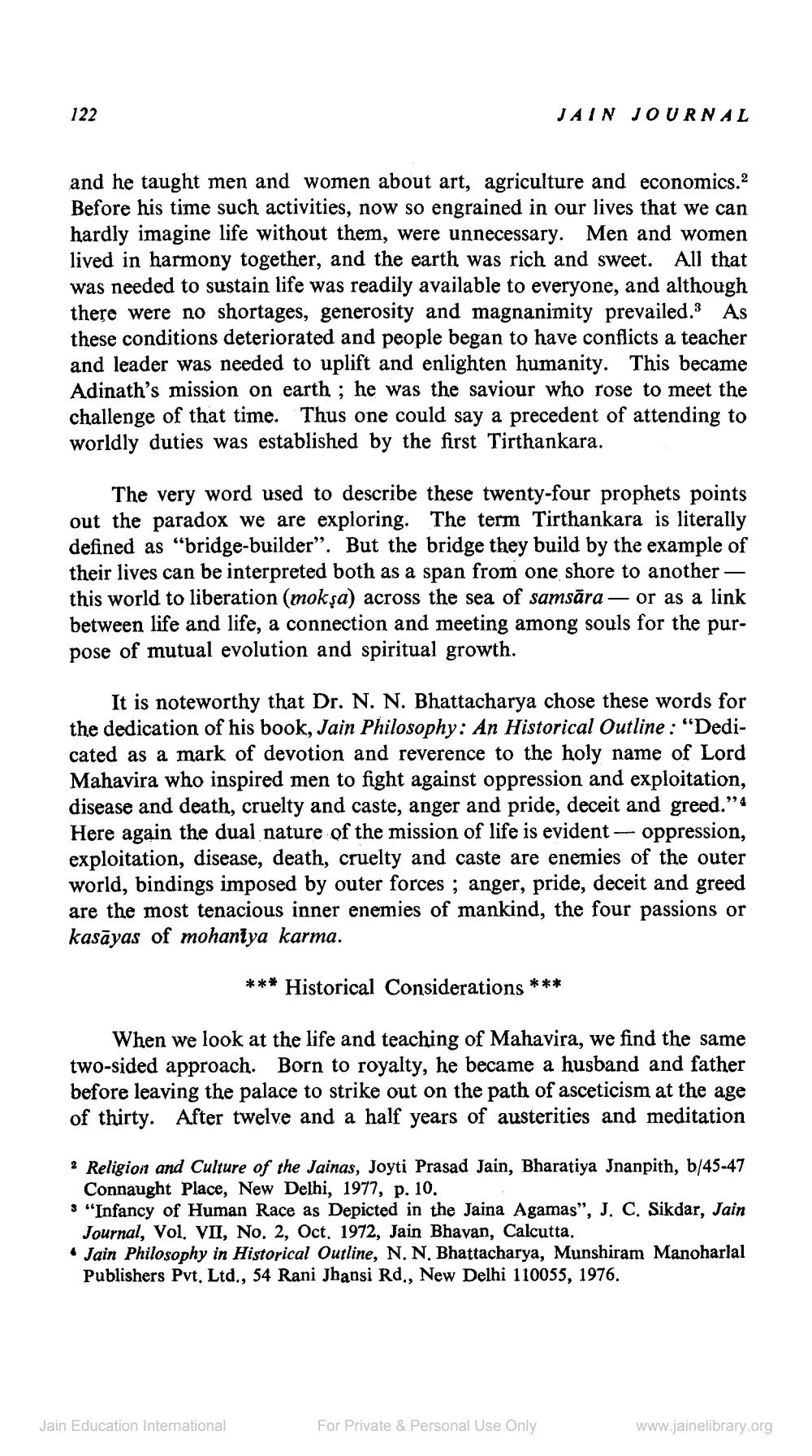________________
122
and he taught men and women about art, agriculture and economics.2 Before his time such activities, now so engrained in our lives that we can hardly imagine life without them, were unnecessary. Men and women lived in harmony together, and the earth was rich and sweet. All that was needed to sustain life was readily available to everyone, and although there were no shortages, generosity and magnanimity prevailed." As these conditions deteriorated and people began to have conflicts a teacher and leader was needed to uplift and enlighten humanity. This became Adinath's mission on earth; he was the saviour who rose to meet the challenge of that time. Thus one could say a precedent of attending to worldly duties was established by the first Tirthankara.
JAIN JOURNAL
The very word used to describe these twenty-four prophets points out the paradox we are exploring. The term Tirthankara is literally defined as "bridge-builder". But the bridge they build by the example of their lives can be interpreted both as a span from one shore to another — this world to liberation (mokşa) across the sea of samsāra — or as a link between life and life, a connection and meeting among souls for the purpose of mutual evolution and spiritual growth.
It is noteworthy that Dr. N. N. Bhattacharya chose these words for the dedication of his book, Jain Philosophy: An Historical Outline: "Dedicated as a mark of devotion and reverence to the holy name of Lord Mahavira who inspired men to fight against oppression and exploitation, disease and death, cruelty and caste, anger and pride, deceit and greed."4 Here again the dual nature of the mission of life is evident - oppression, exploitation, disease, death, cruelty and caste are enemies of the outer world, bindings imposed by outer forces; anger, pride, deceit and greed are the most tenacious inner enemies of mankind, the four passions or kasayas of mohaniya karma.
*** Historical Considerations ***
When we look at the life and teaching of Mahavira, we find the same two-sided approach. Born to royalty, he became a husband and father before leaving the palace to strike out on the path of asceticism at the age of thirty. After twelve and a half years of austerities and meditation
2 Religion and Culture of the Jainas, Joyti Prasad Jain, Bharatiya Jnanpith, b/45-47 Connaught Place, New Delhi, 1977, p. 10.
"Infancy of Human Race as Depicted in the Jaina Agamas", J. C. Sikdar, Jain Journal, Vol. VII, No. 2, Oct. 1972, Jain Bhavan, Calcutta.
Jain Philosophy in Historical Outline, N. N. Bhattacharya, Munshiram Manoharlal Publishers Pvt. Ltd., 54 Rani Jhansi Rd., New Delhi 110055, 1976.
Jain Education International
For Private & Personal Use Only
www.jainelibrary.org




